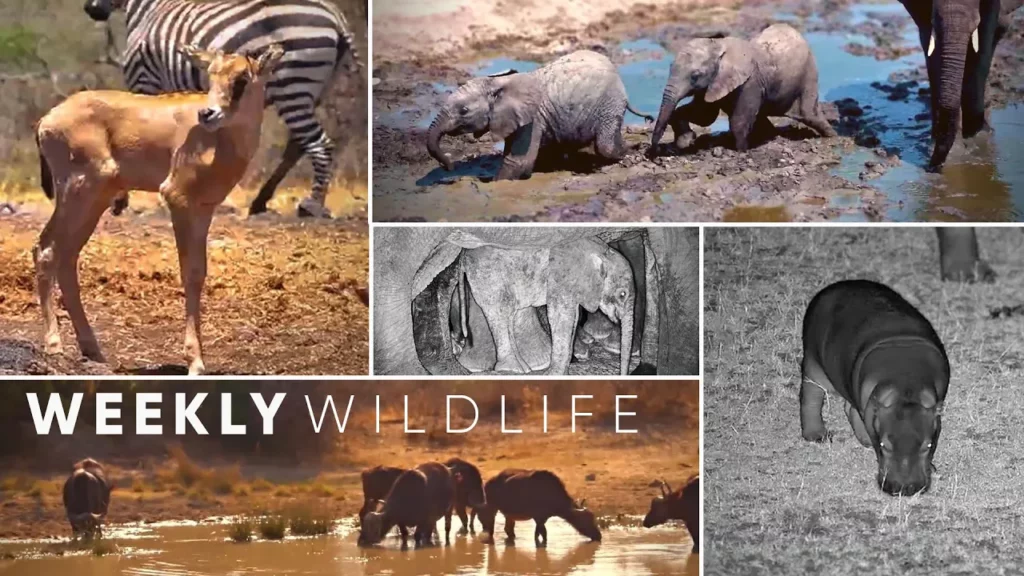
All the latest sightings from the Africam live streams across Africa. We capture rare moments in the wild, where wildlife can be viewed in their natural habitats, uninterrupted and undisturbed.
An Oryx Calf’s First Visit to the Waterhole
The East African oryx is very closely to related to the gemsbok and was previously considered a subspecies of it, it is now known to be a distinct species, Oryx beisa, with two subspecies.
Cute Elephants Stuck in the Mud
Water is not only a necessary bodily requirement, it is also a source of fun; elephants love to play and swim in water, often splashing themselves to cool down. When it is very hot, elephants wet their bodies then proceed to dust bathe which cakes their bodies with mud, this mud cools them and acts as sun protection.
A Cute Baby Elephant
At birth the calf weighs 100 to 120 kg. Calves under a year old are able to pass under mom’s body and have little control of their trunks which they wield around clumsily. Between the ages of 2 and 3 the calves start developing little tusks.
Tiny Little Hippo Munches on Grass
Cows give birth in the water to one calf after a gestation period of eight months. Calves are well protected in the water and are most vulnerable to aggressive bulls. Hippos feel safest in the water which is their territory, they are also very dangerous but the greatest danger arises when people put themselves between the hippos’ place of safety and the hippo itself.
Busy Young Buffalos at Mabula
Apart from ample grass to feed on, Cape buffalo are dependent on water, drinking as much as 35 L in one go, so they tend to stay in areas where there are permanent water sources.





